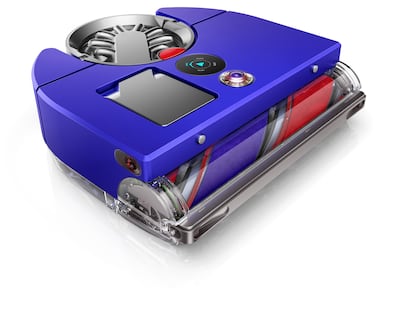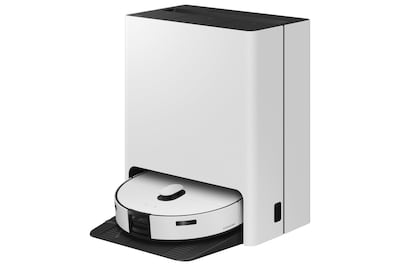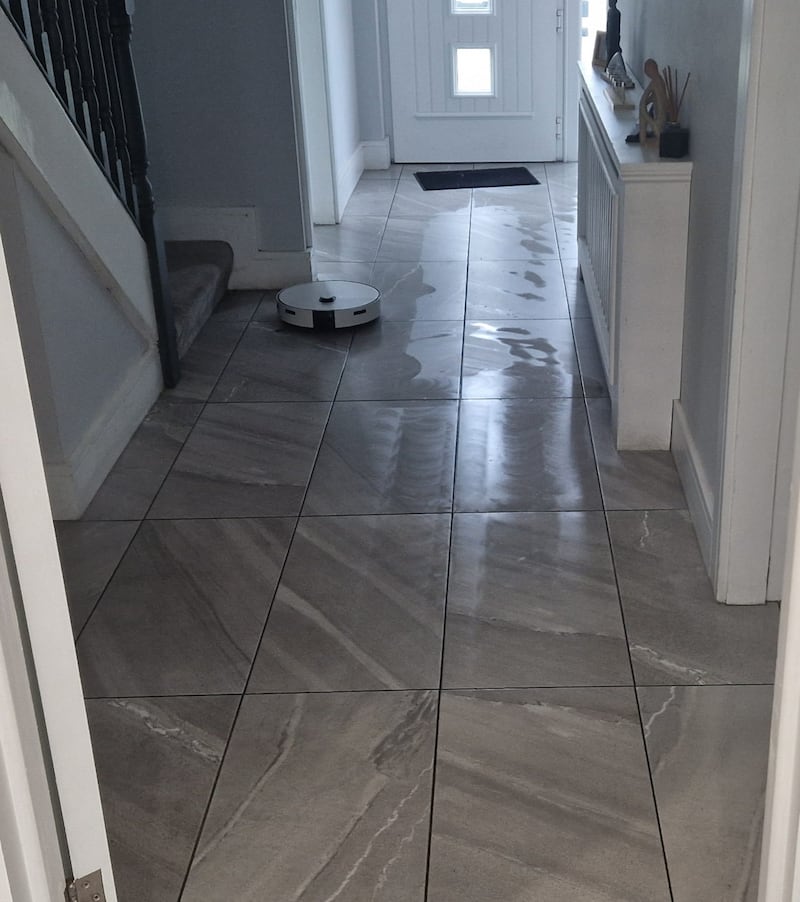The arrival of Dyson’s latest robot vacuum (or Edgar as we call him, cos we’re gas) couldn’t have been more timely. The two household members most usually press-ganged into hoovering had just landed summer jobs and promptly downed all tools related to domestic chores. Sadly, no one in the family is compulsively obsessed with cleaning. Sleeping, eating, leaving butter and crumb trails on surfaces? Yes. Hoovering? No.
Now I can lie for the purposes of this exercise and say I immediately downloaded the relevant app and explored every possible usage for this lovely looking device. But I am a normal, busy, middle-aged woman so I did the next best thing ... got one of the kids to set the thing up. My feedback on this is that it took a matter of minutes (ie short enough that they weren’t distracted back to scrolling on their phones) and Edgar was up and running. If not operating it from the app, you can just activate it manually via a good old-fashioned control screen on the top of the device.
For the first run it goes off and maps the floor space, and after that it’s work, work, work. I envisaged a robot would proceed along the floor in a nice linear fashion so it would be clear what was done and what remained to be done. But Edgar is more of a moocher and seems to amble about in non-instinctive directions.
The reassurance comes later when you can see on the map a detailed account of the floor space it has covered and degrees of filth it encountered (more alarming than reassuring). It also runs smoothly across varied surfaces from wood floors, to rugs to kitchen tiles.
READ MORE
The other small concern was how Edgar would get along with the Queen, aka Lexi our beloved springer spaniel. Understandably, anything independently (and not all that silently) roving our floors and getting into all sorts of nooks and crannies was going to spark Lexi’s interest, but once she realised it wasn’t out to get her and it wasn’t a rival for her humans’ affections she was happy enough to ignore her. And frankly whether she liked it or not, this is a big selling point of Edgar – it is brilliant for keeping endless dog hair under control.
Several weeks in and I’m loving the 360 Vis Nav. To maximise its work rate, before it sets off you need to upend chairs on to tables and lift or push back as much furniture as possible. This gives it a clean sweep around the floors. Though it does its best, it can’t manoeuvre fully seamlessly around chair and table legs, it doesn’t have shape shifter capabilities – sadly. However, it is a great way of keeping on top of the housework (and dog hair) midweek, though I would advise supplementing with a thorough old-fashioned hoover at the weekend.
The dust unit fills pretty quickly but it’s a nattily designed piece of kit and even emptying it is a pleasure. Having by now downloaded the MyDyson app it is user friendly and settings are simple: Auto (where it learns dust levels and optimises suction in heavy traffic areas); Quick (a top-up setting); Quiet (it is noisier than you’d expect so this is a preferred setting when we’re in the house) and Boost (a short blast of maximum suction for localised messes, I imagine).

You can zone rooms and instruct it which ones you want cleaned, and you can schedule it to operate when you’re not home. There is a great satisfaction in being elsewhere – preferably doing something lovely – while knowing Edgar is back home toiling away on your behalf.
‘That’s not what it’s for’
“Where’s the cat?” I ask the youngest, who is sitting on the livingroom couch.
“I’ll check,” she replies, picking up my phone.
A few seconds later, the newest addition to our household is whirring in the kitchen. Manually controlling it with my phone, and using the video camera on the front of the robot, she manoeuvres it around a few chairs before stopping it in front of a nonplussed puss.
“That’s not what it’s for,” I protest, quietly impressed by this new level of laziness.
For the past few weeks we have been using Samsung’s Jet Bot Combo AI+, a robot mop and vacuum that, sometimes, we’ve used for what it’s actually designed for.
We already have a robot mop, a cheap, impulsive buy some years ago, though obviously not without notions. It mops the floor in a random, uncaring fashion, like a bored child who is handed a mop and told to get moving. There’s no discernible plan, and it passes over pieces of paper, dust, small bits of food, etc, without a care in the world. We affectionately refer to it as Max. So, when the new, flashy-looking Samsung model arrived, naturally, there was only one name for it.
The differences between Max and Super Max are not insignificant.

Max doesn’t have a cleaning station. I am the cleaning station – taking the bloody thing apart after every run, emptying the small dust box, washing the “mop”, along with all the bits and pieces that are connected to the robot. Usually, there are pieces of hair welded around the wheels.
Super Max comes with what Samsung calls “Steam Station Clean+”. The size of a medium-sized kitchen rubbish bin, it has slots for a clean water tank, a waste water tank and a dustbin – and certainly takes away much of the preparation and post-work effort we had grown accustomed to.

My routine before using Max was: Take all items, small and large, off the floor; sweep the floor; mop the floor. Now, turn on the robot vacuum and mop.
Yes, I know. Ridiculous.
Super Max (aka Jet Bot Combo AI+) uses cameras to scan the area so it can detect and avoid small items on the floor. On one of its first runs it stopped before a dangling laptop cable and cleaned around it. I can’t prove anything, but I’m sure it shook its head. Max would have unceremoniously ploughed into the cable, maliciously pulling the laptop from the table. In truth, while both robots can be put to work when the home dwellers are asleep or away, only one can realistically be used without adult supervision.
After mapping some of the rooms in our house (primarily the kitchen), Super Max sets off at a leisurely pace, taking a couple of hours to clean and mop the floors. Intermittently, it returns to its station to wash mops “at high temperature with steam and water” and empty the dust bag, before rushing back to the spot it had last cleaned to resume work. Unimpressed at its first effort, we tinker with the settings (you can change water level, suction power, etc) and the subsequent results are consistently excellent. This machine is not cheap (no offence Max), but it’s undoubtedly a quality product. Unlike, well, Max.
“What are you doing on the app now?” I ask the youngest, peering over her shoulder.
“Echo is lonely, so I’m playing some music for her. And, before you say it, that is what it’s for.”
I check, and there’s a setting for playing music to pets. You can even program the robot to detect noise from a pet and play music to help it relax.
Even the cat is impressed.
The Dyson Vacuum 360 Vis Nav can be purchased for about €1,299, while Samsung’s Jet Bot Combo AI+ retails at about €1,500. Cheaper robot vacuum options are available from Lidl (€170) and Harvey Norman (Eufy Clean Pro (€899).
- Sign up for push alerts and have the best news, analysis and comment delivered directly to your phone
- Join The Irish Times on WhatsApp and stay up to date
- Listen to our Inside Politics podcast for the best political chat and analysis



















